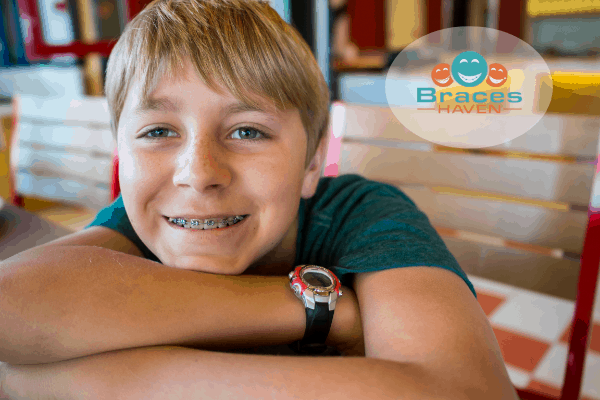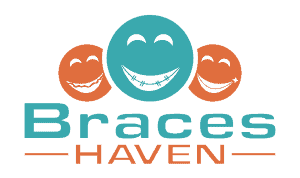Getting Top Braces Only: Is It An Option?
If you’re primarily concerned with straightening your top front teeth, you might automatically assume you can get away with just top braces. However, only moving one arch of your teeth is done on a case-by-case basis. Although they might not be sitting side-by-side with your lower teeth, the way they bite together is as unique as a fingerprint. If you have your upper teeth straightened with braces or aligners, they need to occlude (bite against) the lower teeth in the right areas. If they don’t, you can experience an end-to-end situation or crossbite, where the enamel on each opposing tooth will start to wear the other one down.
Reasons to Get Top or Bottom Braces Only
When it comes to top or bottom braces only, partial treatment isn’t all that common. However, it is possible.
Some of the factors to consider include:
- how many teeth need to be straightened
- if you have any missing teeth,
- previous orthodontic treatment, and
- the severity of your tooth misalignment.
Depending on what tooth movements need to happen, sometimes the upper and lower arch of braces are connected by elastics or other devices. The extra connections allow for more efficient and predictable tooth movement. Without it, some types of corrections will not occur.
One of the most common reasons to get just top or bottom braces is usually when there’s a minor cosmetic issue. Attaching the appliances to one arch or even a limited number of teeth could be enough to straighten out minimal bite issues. We usually refer to those types of treatments as “minor tooth movement” or “short-term ortho.” However, those types of braces still typically use a two-arch appliance system.
Getting Braces on Bottom Teeth Only: When and Why
As we get older, it’s common to see issues such as crooked bottom teeth, especially toward the front of your smile. Over time it’s natural for our teeth to start shifting forward slightly. Usually, the first sign that people notice is crowded bottom teeth. Those narrower teeth tend to start bunching up or overlapping one another.
Bottom front teeth shifting may also be a sign of orthodontic relapse. Maybe you no longer wear your retainer or haven’t had one in years. If you wore braces in the past, your teeth might try to drift back into their previous position.
Sometimes orthodontists like Dr. Cohen will initiate partial treatments by only placing appliances on one arch or the other. Since teeth have to be moved systematically and in a way that relates to the opposing arch, single-arch appliances are usually only used for a limited portion of your treatment.
How Much Does Top or Bottom Only Braces Cost?
You might think that if you’re getting “just top braces” or “just bottom braces” that the cost of your orthodontic experience will be 50% of the investment. Although treatment uses fewer supplies and materials, there’s still quite a detailed process involved in planning and coordinating your tooth movement.
A single-arch or partial braces treatment will usually cost less than full-mouth braces, but it won’t be half the price. You can still expect it to be cheaper than a complex orthodontic process involving all of your teeth.
For a specific price on upper or lower-only braces, you’ll need to have Dr. Cohen examine your teeth. Assuming you qualify for a single arch treatment, we can then coordinate the length of the process, the type of braces (or aligners) you need to wear, incorporate any benefits you have, and then do all of the math to work out your final care plan. At that point, you’ll have a customized quote for your unique situation. The cost of getting top or bottom only braces range from $3,000 to $5,000.
Considerations to Take with Single Arch Treatment
Partial braces are just that: partial. They won’t provide the full-mouth alignment experience that you see with conventional braces. If you’re only adjusting one arch, there’s no way you can also coordinate the proper biting relationship with the opposing arch. That’s why a partial braces process is usually restricted to only certain cases (like minor tooth movement in the front of your smile.)
You’ll need to follow your home care instructions carefully, use prescribed appliances as directed, and keep your appointments. Otherwise, complications may arise that delay results or require placing braces on the opposing arch to correct irregular tooth movement patterns.
Want Straight Bottom or Top Teeth? Here’s What to Do Next
If you’re thinking I just want top row braces or you only want to put orthodontic appliances on some of your teeth, you need to work with an experienced orthodontist who handles issues like short-term ortho or cosmetic cases. Dr. Charles Cohen will look at your overall bite to better understand your anatomy to see what’s possible. Be sure to share your concerns and questions with him, so that you can find the best braces solution to fit your lifestyle.
Have questions? Schedule a no-pressure orthodontic consultation at Braces Haven in Barrhaven, Ottawa today!
Use our form below to book your free consultation.


